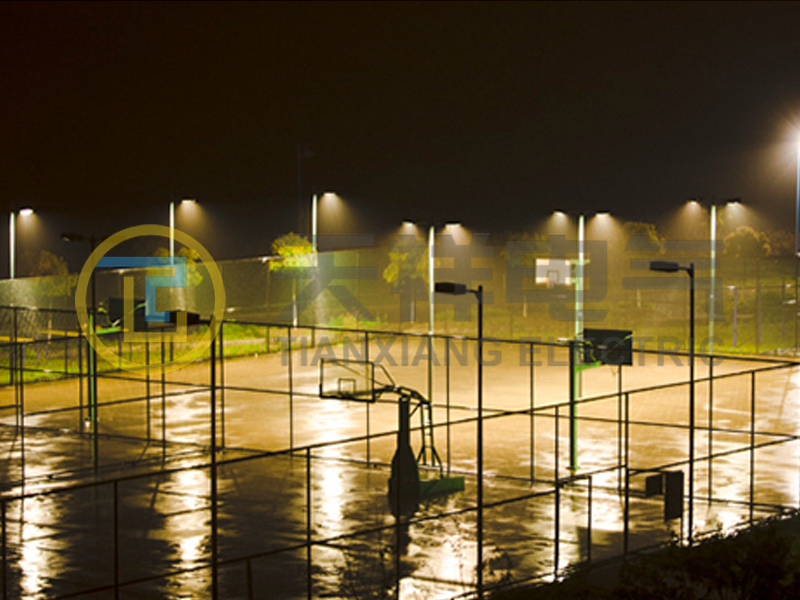Outdoor sports venues are centers of excitement, competition and community gatherings. Whether it’s a high-stakes football game, a thrilling baseball game, or an intense track and field event, the experience for athletes and spectators depends heavily on one key factor: lighting. Proper lighting not only ensures athlete safety and performance, but also enhances the fan viewing experience. This article takes an in-depth look at the importance of outdoor stadium lighting and the standards for managing brightness.
Importance of Proper Stadium Lighting
Security and Performance
For athletes, proper lighting is critical for optimal performance and safety. Insufficient lighting can lead to misjudgments, increased risk of injury, and overall poor performance. For example, in fast-paced sports like soccer or rugby, players need to see the ball clearly and anticipate the moves of teammates and opponents. Proper lighting ensures that the venue is evenly illuminated, reducing shadows and glare that can impede visibility.
Audience experience
For spectators, whether they are at the stadium or watching at home, lighting plays a vital role in the overall experience. The well-lit stadium ensures fans can watch the action seamlessly no matter where they sit. For televised events, proper lighting is even more important as it affects the quality of the broadcast. HD cameras require consistent and adequate lighting to capture clear and vibrant images.
Compliance and Standards
Stadiums must adhere to specific lighting standards in order to host professional and international events. These standards are set by various sports governing bodies and organizations to ensure uniformity and fairness in competition. Failure to comply may result in penalties, disqualification from the event and damage to reputation.
Outdoor sports venue lighting brightness standards
Illuminance level
Illuminance is measured in lux (lx) and is the amount of light falling on a surface. Different sports have different requirements for lighting levels. For example, the International Association of Athletics Federations (IAAF) recommends an illumination level of 500 lux for track and field events. In comparison, FIFA (International Football Federation) requires that the light intensity be at least 500 lux during training and as high as 2,000 lux during international matches.
Uniformity
Uniformity is a measure of how evenly light is distributed across the playing surface. It is calculated by dividing the minimum illuminance by the average illuminance. Higher uniformity means more consistent lighting. For most sports, a uniformity ratio of 0.5 or higher is recommended. This ensures there are no dark spots or overly bright areas on the field, which can affect visibility and performance.
Color temperature
Color temperature, measured in Kelvin (K), affects the appearance of lighting. For outdoor sports venues, color temperatures between 4000K and 6500K are generally recommended. The range provides bright white light that closely resembles daylight, improving visibility and reducing eye fatigue for athletes and spectators.
Glare Control
Glare can be a serious problem in stadium lighting, causing discomfort and reducing visibility. To reduce glare, lighting fixtures should be designed and positioned to direct light exactly where it is needed. Anti-glare technology such as blinds and shields can also be used to minimize the impact of glare on athletes and spectators.
Color Rendering Index (CRI)
Color rendering index (CRI) measures the ability of a light source to accurately reproduce colors. The higher the CRI, the better the color rendering. For sports venues, a CRI of 80 or higher is recommended. This ensures that colors appear natural and vibrant, enhancing the visual experience for both players and viewers.
Technological Advances in Stadium Lighting
LED lighting
LED (Light Emitting Diode) technology has revolutionized stadium lighting. LEDs offer many advantages over traditional lighting sources, including greater energy efficiency, longer life, and better control of light distribution. LED lights can be easily dimmed and adjusted to meet specific brightness standards, making them ideal for sports venues.
Intelligent lighting system
Smart lighting systems can monitor and control stadium lighting in real time. These systems can adjust lighting levels based on the time of day, weather conditions and the specific requirements of different sports. Smart lighting can also enable remote control and automation, reducing the need for manual intervention and ensuring consistent lighting quality.
Sustainability
Sustainability is becoming increasingly important in stadium design and operations. Energy-efficient lighting solutions such as LEDs and smart lighting systems help reduce energy consumption and carbon footprint. In addition, many sports venues use renewable energy sources, such as solar panels, to power their lighting systems.
In conclusion
Proper lighting is an important component of outdoor sports venues, affecting athlete safety and performance, spectator experience, and the overall success of the event. Complying with brightness standards ensures that sports venues provide optimal lighting conditions for various sports. With the advancement of technologies such as LED lighting and intelligent systems, sports venues can achieve high-quality, energy-saving lighting to meet the needs of modern sports. As the world of sports continues to evolve, so do the standards and technologies that light up arenas and create unforgettable moments.
Post time: Sep-19-2024





